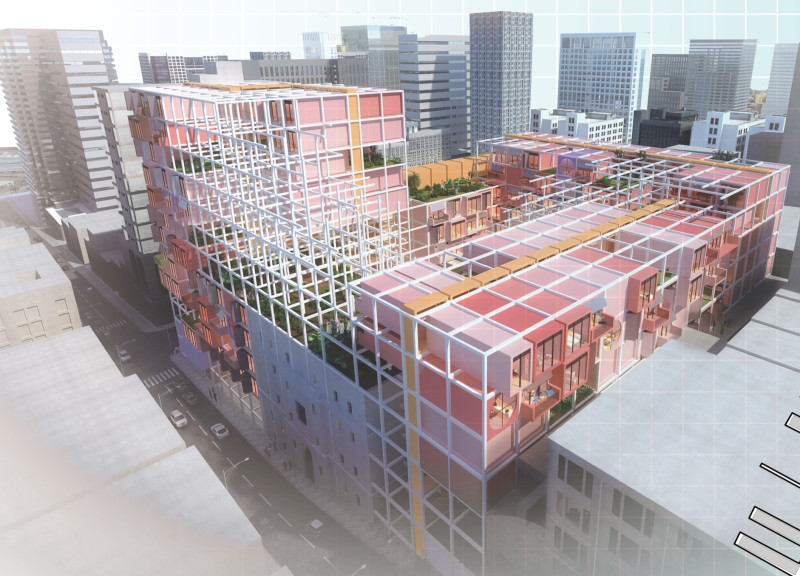5 key facts about this project
The design concept addresses the pressing need for affordable housing in coastal urban areas that are rapidly expanding. Using a framework called Fractal Urbanism, the approach allows the urban environment to adjust and grow over time. By blending residential units with community and public spaces, the plan aims to create a lively and connected atmosphere that serves the needs of diverse populations.
Fractal Urbanism as a Design Principle
At the core of the design are distinct elements known as "pixels," which include residential units, community spaces, public areas, adaptable interiors, co-working spaces, wellness studios, balconies, shared laundry facilities, community gardens, and retail spaces. This varied mix is designed to improve the quality of life in urban areas, accommodating a range of activities and addressing the needs of different groups while encouraging social interactions.
Economic Efficiency in Construction
Economic considerations play a significant role in this approach, focusing on effective construction and logistics. Prefabricated units are set to be built and transported at lower costs compared to traditional methods. Utilizing existing infrastructures, such as piers that can be modified for shipping, allows for quick assembly of modular components. This efficiency promotes timely connections to vital utilities.
Cooperative Housing Model
A cooperative housing model is central to maintaining affordability for residents. By allowing municipalities to transfer land to experienced nonprofit groups, a land trust system can be established to support housing stability. Tenants may buy shares or pay membership fees, with the nonprofit offering important subsidies. This model encourages collective ownership while fostering community ties and investment in the local environment.
The design also focuses on combining public and private spaces to enhance social interactions. Features like micro-parks, community gardens, and co-working spaces are incorporated to create inviting areas that promote engagement among residents. The layout leads to a carefully arranged environment where living, working, and socializing become part of a cohesive urban experience, enriching daily life for all who inhabit it.






















































